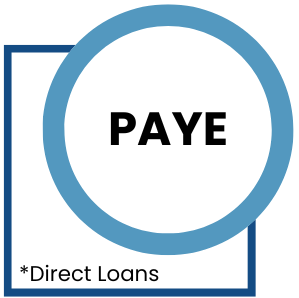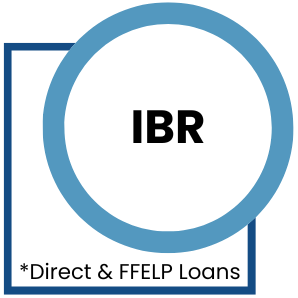On This Page
Eligible Borrowers:
Any Direct Loan borrower with an eligible loan type may choose this plan.
Monthly Payment:
Your monthly payment will be the lesser of
- 20 percent of discretionary income, or
- the amount you would pay on a repayment plan with a fixed payment over 12 years, adjusted according to your income.
Payments are recalculated each year and are based on your updated income, family size, and the total amount of your Direct Loans.
You must update your income and family size each year, even if they haven’t changed.
If you’re married, your spouse’s income or loan debt will be considered only if you file a joint tax return or you choose to repay your Direct Loans jointly with your spouse.
Time Frame:
Any outstanding balance will be forgiven if you haven’t repaid your loan in full after 25 years.
You may have to pay income tax on any amount that is forgiven.
Eligible Loans:
- Direct Subsidized and Unsubsidized Loans
- Direct PLUS Loans made to students
- Direct Consolidation Loans
How to Apply
The quickest and easiest way to submit your request for ICR is online. You will need your FSA ID, personal information, spouse information (if applicable), and income information to complete the request.
If you are unable to complete the online request, you have the option to use the form instead.
Eligibility
ICR is available for Direct Loan borrowers only, and eligible loan types include: Direct Subsidized/Unsubsidized, Direct Grad PLUS, and Direct Consolidation loans. Unlike the SAVE (formerly REPAYE), PAYE or IBR repayment plans, consolidation loans that include PLUS loans can be repaid under the ICR plan. Direct Parent PLUS loans and defaulted loans cannot be repaid under the ICR plan.
Parent borrowers can access this plan by consolidating their Parent PLUS Loans into a Direct Consolidation Loan.
Monthly Payment Calculation
Your monthly payments will be based on your eligible federal student loan debt, family size, and your income. Your monthly payment amount will be capped at the lesser of 20% of your discretionary income or the amount you would pay on a repayment plan with a fixed payment over 12 years, adjusted according to your income. Your discretionary income is the difference between your Adjusted Gross Income (AGI) and 100% of the poverty line amount for your family size and state. The payment amount is valid for 12 months and you will be required to reapply each year by submitting a new Income-Driven Repayment Plan Request form that will provide us with your updated income and family size information if you wish to continue on the ICR plan. Your payment amount may change as your income or family size changes.
Note
If you are married, your spouse’s income or loan debt will be considered only if you file a joint tax return or you choose to repay your Direct Loans jointly with your spouse. If your spouse has eligible student loans, his or her loan debt may also be considered when calculating your monthly payment on ICR. If you believe that your AGI, as reported on your most recently filed federal income tax return, does not reasonably reflect your current income and your spouse’s current income (if applicable), you may provide alternative documentation of income and provide proof of your current income (as instructed in Section 5 of the Income-Driven Repayment Request form).
Loan Forgiveness
Under ICR, your remaining balance will be forgiven after 25 years.
You may be eligible for loan forgiveness after 10 years if you are seeking Public Service Loan Forgiveness (PSLF).
Learn More About PSLFNote
The Department of Education (ED) is conducting a one-time adjustment of payment counts toward Income-Driven Repayment and Public Service Loan Forgiveness programs. For more information, visit StudentAid.gov/idradjustment.
Interest Subsidy
The ICR does not offer any interest subsidy benefits.
Payment Estimate
Interested in what your payment amount would be on ICR? Use the Loan Simulator on StudentAid.gov.
Loan SimulatorAdditional Resources
- Video: How to Create an FSA ID
- Repayment Plan Comparison Chart
- Income-Driven Repayment Plans (StudentAid.gov)
- Income-Driven Repayment Form
English





